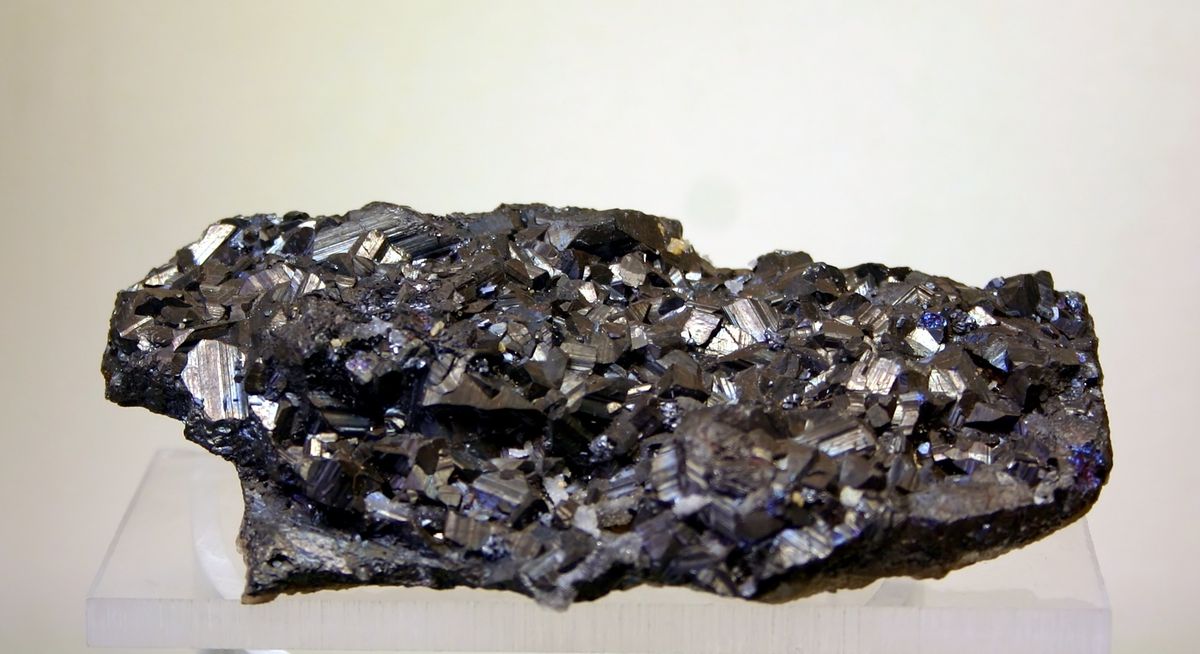
Freieslebenite is a rare and intriguing mineral that captures the interest of geologists and collectors alike. But what exactly is Freieslebenite? This mineral, named after the German mining official Johann Carl Freiesleben, is a sulfosalt composed of silver, lead, and antimony. Its unique crystal structure and metallic luster make it a standout in any collection. Found primarily in hydrothermal veins, Freieslebenite often forms in association with other minerals like galena and sphalerite. Its rarity and distinctive properties make it a subject of fascination. Ready to learn more? Here are 30 facts about Freieslebenite that will deepen your understanding of this captivating mineral.
Key Takeaways:
- Freieslebenite is a rare mineral with unique properties, often found in association with other minerals. It's prized by collectors and studied by geologists to understand its formation and geological significance.
- Despite its challenges, studying Freieslebenite provides valuable insights into Earth's history and mineral formation. Its rarity and specific properties make it a fascinating subject for researchers and mineral enthusiasts alike.
What is Freieslebenite?
Freieslebenite is a rare mineral that captures the interest of geologists and mineral collectors alike. It has a unique composition and fascinating properties. Let's dive into some intriguing facts about this mineral.
-
Freieslebenite is a sulfosalt mineral composed of silver, lead, and antimony.
-
It was named after Johann Carl Freiesleben, a German mining official and mineralogist.
-
The chemical formula for Freieslebenite is AgPbSbS3.
-
This mineral typically forms in hydrothermal veins, often associated with other silver-bearing minerals.
-
Freieslebenite crystals are usually prismatic or tabular in shape.
Physical Properties of Freieslebenite
Understanding the physical properties of Freieslebenite can help identify it in the field. Here are some key characteristics.
-
Freieslebenite has a metallic luster, making it quite shiny.
-
Its color ranges from lead-gray to black.
-
The mineral has a Mohs hardness of 2.5 to 3, which means it is relatively soft.
-
Freieslebenite has a specific gravity of 6.2 to 6.3, indicating it is quite dense.
-
It exhibits perfect cleavage in one direction, which means it breaks smoothly along a specific plane.
Where is Freieslebenite Found?
Freieslebenite is not a common mineral, but it has been discovered in various locations around the world. Here are some notable places where it can be found.
-
The type locality for Freieslebenite is the Himmelsfürst Mine in Germany.
-
It has also been found in the Czech Republic, particularly in the Pribram mining district.
-
In Mexico, Freieslebenite occurs in the Guanajuato mining region.
-
The mineral has been discovered in the United States, specifically in Colorado and Nevada.
-
Other countries where Freieslebenite has been found include Bolivia, Peru, and Romania.
Uses and Significance of Freieslebenite
While Freieslebenite is not widely used in industry, it holds significance for various reasons. Here are some points to consider.
-
Freieslebenite is primarily of interest to mineral collectors due to its rarity and unique properties.
-
It can serve as an ore of silver, although it is not a major source.
-
The mineral is studied by geologists to understand the conditions under which it forms.
-
Freieslebenite can be used in educational settings to teach students about sulfosalt minerals.
-
Its presence in hydrothermal veins can provide clues about the geological history of an area.
Interesting Facts About Freieslebenite
Beyond its basic properties and uses, Freieslebenite has some fascinating aspects worth noting.
-
Freieslebenite often forms in association with other minerals like galena, sphalerite, and tetrahedrite.
-
It can sometimes be found in well-formed crystals, which are highly prized by collectors.
-
The mineral was first described in 1845 by Wilhelm Karl Ritter von Haidinger, an Austrian mineralogist.
-
Freieslebenite's name honors Johann Carl Freiesleben, who made significant contributions to mining and mineralogy.
-
The mineral can sometimes exhibit twinning, where two crystals grow together in a specific orientation.
Challenges in Studying Freieslebenite
Studying Freieslebenite can be challenging due to its rarity and specific properties. Here are some of the hurdles researchers face.
-
Freieslebenite is often found in small quantities, making it difficult to obtain large samples.
-
Its softness means that crystals can be easily damaged during extraction and handling.
-
The mineral's metallic luster can make it challenging to distinguish from other similar-looking minerals.
-
Analyzing Freieslebenite requires specialized equipment to accurately determine its composition and structure.
-
The conditions under which Freieslebenite forms are not fully understood, making it a subject of ongoing research.
The Final Word on Freieslebenite
Freieslebenite, a fascinating mineral, holds a special place in the world of geology. Its unique silver-gray color and complex crystal structure make it a subject of interest for both scientists and collectors. Found primarily in hydrothermal veins, this mineral is often associated with other sulfosalts like pyrargyrite and stephanite. Its chemical composition includes silver, lead, and antimony, which contribute to its distinct properties.
Understanding freieslebenite's formation process and geological significance can provide insights into the Earth's history. This mineral not only adds to the beauty of mineral collections but also serves as a valuable resource for scientific research. Whether you're a seasoned geologist or a curious enthusiast, freieslebenite offers a glimpse into the intricate and captivating world of minerals. Keep exploring, and who knows what other hidden gems you might find!
Frequently Asked Questions
Was this page helpful?
Our commitment to delivering trustworthy and engaging content is at the heart of what we do. Each fact on our site is contributed by real users like you, bringing a wealth of diverse insights and information. To ensure the highest standards of accuracy and reliability, our dedicated editors meticulously review each submission. This process guarantees that the facts we share are not only fascinating but also credible. Trust in our commitment to quality and authenticity as you explore and learn with us.
